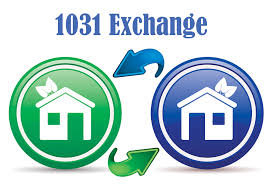
Buying an investment property is most probably an effective way of making money and attaining financial independence. As a real estate investor, you may find yourself in a tax loophole when buying a new real estate before selling your current one. However, real estate investments have opened doors to amazing and profitable opportunities. (Click here to see all Northern Michigan Luxury Lifestyle Homes for Sale)
One advantage of investing in real estate over other properties or assets is that you can decide to exchange the real estate for another in a process known as reverse 1031 exchange. This is done without paying any taxes that apply to the increase in the value real estate value. (Click here to see Northern Michigan's finest collection of vacation rentals)
The reverse 1031 exchange is a tax deferring strategy used by real estate investors when buying a new property before selling the one they already had. The strategy allows you to get a replacement real estate first and then sell your current one afterward. You can be free from tax returns for decades by simply following the reverse 1031 exchange rules.
This article will discuss all the things you need to know before using a reverse 1031 exchange strategy. It will compile information about:
- Types of 1031 exchanges
- Why should you use a 1031 reverse exchange
- How to do a 1031 reverse exchange
- Structuring a reverse 1031 exchange
- Reverse 1031 exchange timelines
- Pros and cons of reverse 1031 exchanges
Types of 1031-Exchanges
Before digging deeper into reverse 1031 exchanges, you may want to look at the different kinds of 1031 exchanges. Generally, there are four types of 1031 exchanges. The following property exchanges will assist you in getting a new property without paying the capital gains tax.
Simultaneous Exchange
This is when you find a replacement property and sell your relinquished property simultaneously. The following are ways in which a simultaneous exchange takes place.
- Swapping the deeds with the other party
- Exchanging the deeds while facilitated by a third-party
- Using a qualified intermediary to handle the exchange
Delayed Exchange
This is commonly used by investors today, where you relinquish the original property before acquiring a replacement. The sale and purchase agreement is executed before beginning the delayed exchange. After this, an exchange intermediary initiates the relinquished property sale. The intermediary also holds the proceedings for up to 180 days until you find a replacement.
Improvement Exchange
It allows you to improve the replacement property using tax-deferred cash while n exchange intermediary holds it. The following three requirements apply if you are deferring all the gain to use it as part of the improvement exchange.
- You must spend the whole exchange equity on full improvements or as a down payment between 180 days
- You must receive a substantially identical property between 45 days
- The replacement property should have an equal or a more excellent value when deeded back to you. Any improvement should take place before you get the title back from the exchange intermediary
Reverse Exchange
This is when you acquire a replacement property through an accommodation titleholder before exchanging the currents property. Simply put, it means buy first and exchange later. Reverse exchanges are relatively uncommon since they are done only in cash, and banks won’t grant them. Failing to close the relinquished property within 180 days cancels the exchange.
Reasons for Doing a Reverse 1031 Exchange
The following are some of the reasons why you might want to conduct a reverse 1031 exchange.
- It provides you with more time for choosing and negotiating for the best deal that matches your investment strategy
- It allows you to get an ideal replacement property at a fair price in good timing for a real estate market that is changing rapidly
- It gives you more control over the price and the contract terms and conditions of staying within the 180-day time frame to complete your reverse 1031 exchange successfully
How to do a 1031 Reverse Exchange
The reverse exchange is quite challenging, and it is recommended you consult your financial advisor, EAT, and Qualified Intermediary before starting the process. Below are the steps you should follow to conduct a reverse exchange.
- Find a new property and decide the method of funding the purchase after finding a replacement property. You can buy in cash or through a lender. Alert both the title company and the lender about your intentions of conducting a reverse 1031 exchange. The replacement property should have an equal or more value than the relinquished one.
- Using your EAT, get a QEAA (Qualified Exchange Accommodation Arrangement). The agreement must dictate the terms and conditions for holding the title in the exchange and transfer process after relinquishing the old property. Also, the EAT takes the title after financing and has it until the end of the exchange.
- After this, decide on which property to sell, at most three properties. After the EAT has your new property’s title, you have 45 days to decide which property to sell. You can find someone to buy the property within 135 days.
- Your Qualified Intermediary will then hand the title over to the buyer and acquire your new property’s title. After that, you can transfer the old title to the buyer, who will simultaneously transfer your funds to the QI and buy the parked property from the EAT.
- It is now time to obtain your new property’s title from the EAT once the transactions are successful.
Structure of a Reverse 1031 Exchange
There are two structures in reverse 1031 exchange, depending on your preferences. The two are explained below:
Exchange Last
This is where the Exchange Accommodation Titleholder holds the replacement property title until the relinquished property is sold, thus granting you more flexibility. The relinquished property is entitled to you until it is sold off.
You provide funds to the EAT to purchase your replacement property. If you are borrowing the cash, the replacement property mortgage is structured so that the EAT appears as the borrower. The QI acts as the seller and transfers the title to the buyer.
The QI then proceeds to purchase your replacement property from the EAT, which is done within 180 days of the EAT purchasing the replacement property. EAT gives you the replacement property’s title while the QI transacts the relinquished property sales to the EAT. The EAT uses these funds to clear any loan used in purchasing your replacement property.
Exchange First
This is where you buy the replacement property through a lender while presenting the EAT title. However, most lenders require you to reinvest the total amount from the relinquished property into the new property. Money must be put into the replacement property to close the deal requiring you to have a lot of cash on hand.
The EAT appears to own the relinquished property before your replacement property is purchased. However, you get to sign a QEAA with the EAT to have control over the property. The EAT takes the title and the ownership of the replacement property after it is purchased, and you have to close on the relinquished property sale within 180 days.
The sales from the relinquished property are presented to you to reimburse the money you provided to the EAT for purchasing the replacement property.
Reverse 1031 Exchange Timeline
- 45 days; the period in which the relinquished property is identified before closing the replacement property purchase
- 180 days; the time frame for selling the relinquished property after the closing of the replacement property purchase
Pros and Cons of Reverse 1031 Exchange
Pros
- If the market is competitive, you can buy the replacement property at the price you want anytime
- You are not pressured to find a replacement property within the 45-day time frame, provided you are paying for it in cash\
- You have time to decide on which property to sell and also to negotiate on the contract terms with the relinquished property buyer
- It evades you from paying taxes, thus minimizing the tax liabilities
- It is an excellent way of securing a suitable investment property
Cons
- A reverse exchange is expensive to conduct
- The process is much challenging, and you cannot do it by yourself
- Failure to sell the old property within 180 days will attract taxes
- You have to start the process again if you make new improvements
Reverse 1031 Exchange Rules
- Both the buyer and the seller are taxpayers
- The replacement and relinquished properties must be secondary residents to both taxpayers
- The process must be complete within 180 days of the replacement property closing
- If the replacement property’s value is less than the relinquished property’s value, tax is charged on the difference
Conclusion
Most investors are successfully conducting the reverse exchange processes despite being much more challenging than other exchanges. Reverse exchange is an excellent way of exchanging your already-appreciated investment property while evading taxes. Since this is a significant investment decision, you should plan for it well before venturing. Expert resources will assist you throughout the whole process.
"I have significant experience buying and selling Northern Michigan commercial real estate and I'd like to help you find the perfect home. Send me a message or give me a call at 231.459.3179 to learn more today."
Posted by Brook Walsh on

Leave A Comment